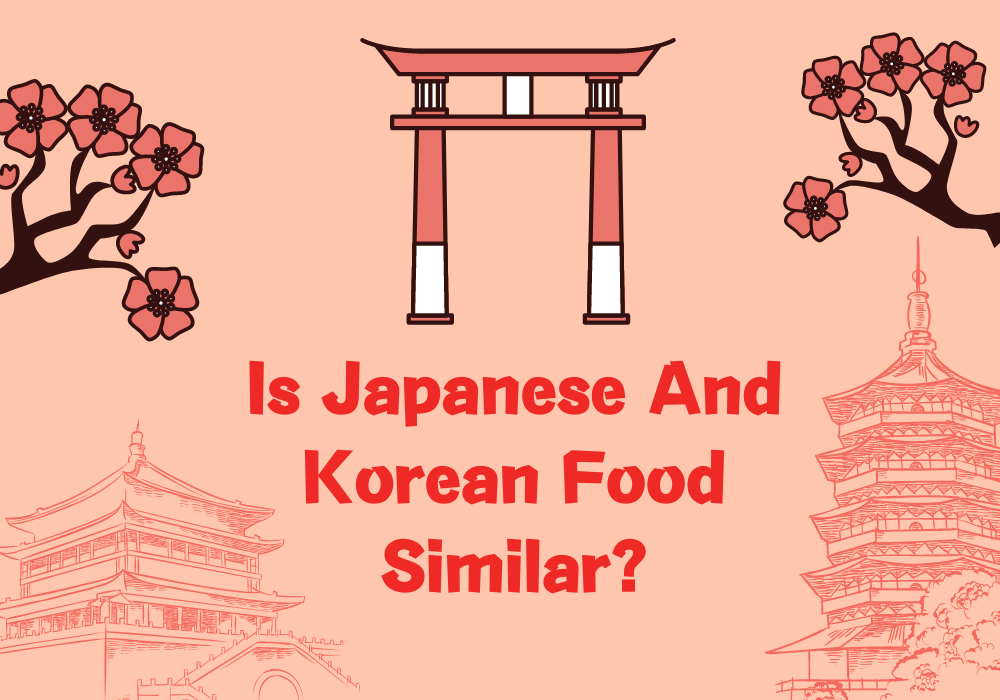Consider learning more about the similarities and contrasts between Japanese and Korean cuisine if you consider yourself a foodie. We are explain everything you need to know about both delicious choices.
What is the major difference between Japanese and Korean cuisine?
These two countries cuisines are as different as night and day, and they’re neighbours. Your experience at a Korean restaurant will be considerably different from that at a Japanese one. These two amazing nations have little in common, except for their wonderful cuisine and diverse eating practises. A misunderstanding exists. While rice is a mainstay in both countries, that’s about where the similarities end.
Meat is a staple in Korean cuisine, and hot sauces are used liberally. Charcoal grills are used to make several of their famous barbecue specialties. Short ribs, bacon, and thinly sliced beef are some of the ingredients that might make up a classic Korean dinner. Various sauces can complement these meats. Korean cuisine is known for its inventive use of many different types of animal parts in addition to the more common pork and beef. The Korean cuisine often includes offal such as tripe, intestines, and even tongue.
There is a strong need for green chile, radishes, garlic, and lettuce wraps in Korean cuisine.
In order to provide a healthier diet, red meat is rarely used in Japanese cookery. Being an island nation, it seems to reason that seafood would play a significant role in traditional Japanese cuisine. The teppan is a type of flat pan frequently used in Japanese cooking for browning the outside of food while keeping the inside moist. Sushi, which consists of raw fish and rice wrapped in seaweed, is one of Japan’s most beloved dishes. The next time you have an Asian food need, you may satisfy it more intelligently by knowing the differences between Japanese and Korean cuisine. If you’re wanting sushi, a visit to a Korean restaurant is not in order.
What is Japanese cuisine?
The term Japanese cuisine is used to refer to any type of meal that has deep cultural roots in Japan. We offer a wide variety of authentic Japanese cuisines, such as sushi, ramen, hibachi-style prepared foods, gyudon, and more. As ramen is all the rage and I really enjoy the way it tastes, I decided to write a detailed piece about the many ingredients you can use to make your own authentic ramen soup at home.
Many Japanese foods have been prepared in the same way for hundreds of years and are now regarded cultural treasures. Modern cuisine has also expanded greatly as a result of cultural interchange with the United States.
Remarkably, the situation in Korea is not dissimilar. Recent culinary creations often incorporate American ideas and canned products out of necessity after the occupation. Although they share some common ingredients, their cooking methods, approaches, and tools couldn’t be more dissimilar. The fermentation process is one distinguishing aspect.
What Is the Best Japanese restaurant in Dubai?
The Kimura-ya Authentic Japanese Restaurant is a Japanese establishment that serves, as far as I can determine, primarily Asian cuisine. With the same ambition that drove them to open two hundred outlets in Japan, they have set their sights on becoming the largest sushi restaurant in Dubai, United Arab Emirates. This eatery serves you some of the finest Japanese cuisine in Dubai. The restaurant’s impeccable reputation is owed in large part to the high quality of its authentic Japanese food and its chic ambiance.
